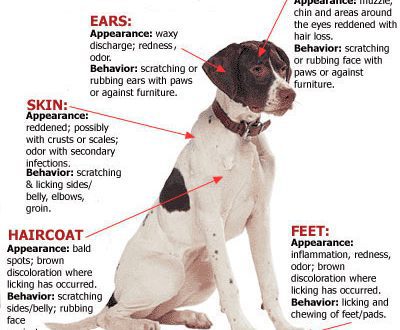
Vitiligo in dogs and cats

It happens that the pet begins to become covered with white spots, they grow and multiply, changing the appearance of the animal. Why is this happening? Consider such a benign disease as vitiligo.
Vitiligo is a non-contagious autoimmune disease. It is manifested by the appearance of depigmented areas of the skin or coat. Most noticeable in animals with dark coats, the appearance of one or many chaotically arranged white spots, which can merge into solid large spots.
Scrappy cat Ellie Labrador Rowdy Atlas Doberman Heidi Dachshund
Diagnosis of pigmentation disorders
Diagnosis is based on history taking, physical examination, clinical manifestations, and diagnostic procedures. The owner should tell the veterinary dermatologist in detail when the problem arose, how it all started, how quickly the process proceeds, whether the animal has itching, or maybe there was an injury in the light area before. If the doctor notices any changes in the skin and coat, deep and superficial skin scrapings, its cytological examination, and trichoscopy may be required. Histological examination of the skin may be required to confirm the diagnosis. Melanocytes and signs of other diseases will be absent in the preparation. For histological examination, a sample of all layers of the skin is needed. Light sedation may be required to collect material. The doctor cuts off a small piece of skin with a special punch or an ordinary scalpel, sutures it. The resulting material is preserved in a special liquid and sent for research. The result has to wait a long time, about 3-4 weeks.
Differential diagnoses
In general, harmless vitiligo is distinguished from other skin diseases:
- Uveodermatological syndrome
- Systemic and cutaneous form of lupus erythematosus
- Mucocutaneous pyoderma
- Dermatomyositis
- Squamous cell skin cancer
- Epitheliotropic lymphoma
- Pemphigus foliaceus
- Vitamin and mineral deficiency
It is important to exclude these diseases, as you can miss time without proper therapy.
Living with vitiligo
Vitiligo does not affect the length or quality of life of a cat or dog in any way. Has only a cosmetic defect. Specific treatment has not been developed. Recommended for appointment are B vitamins, drugs containing zinc, copper, which increase the body’s resistance. Animals with vitiligo should not be bred.





